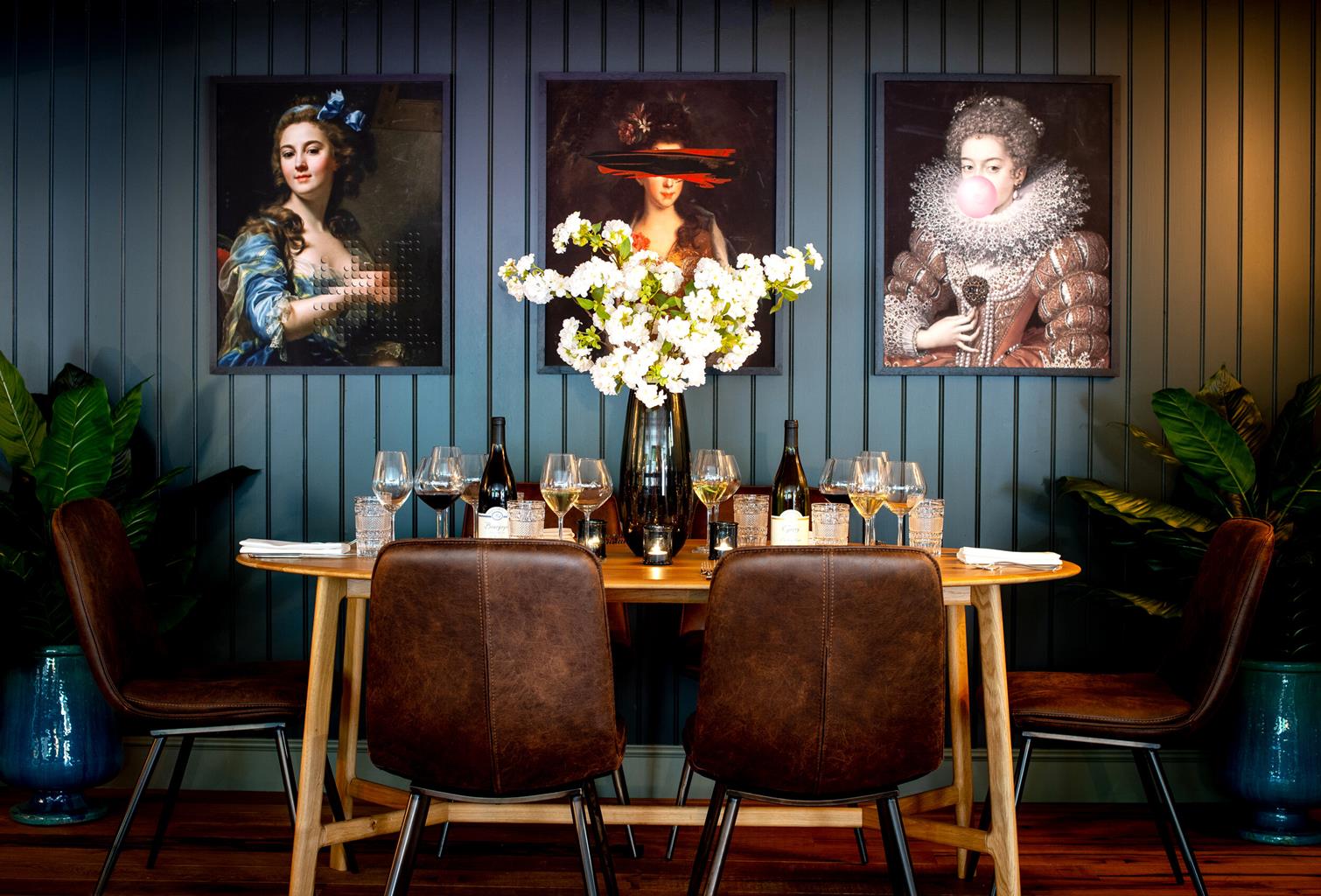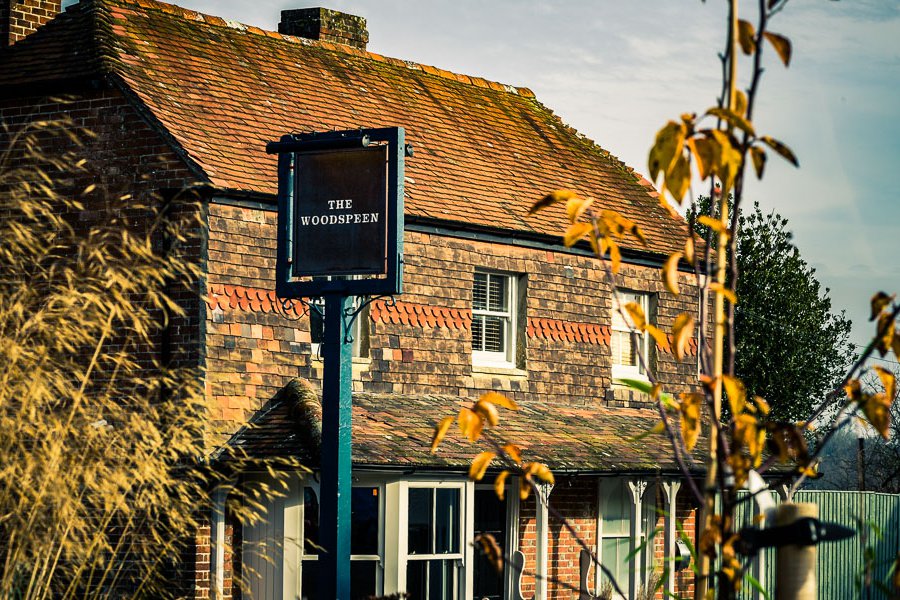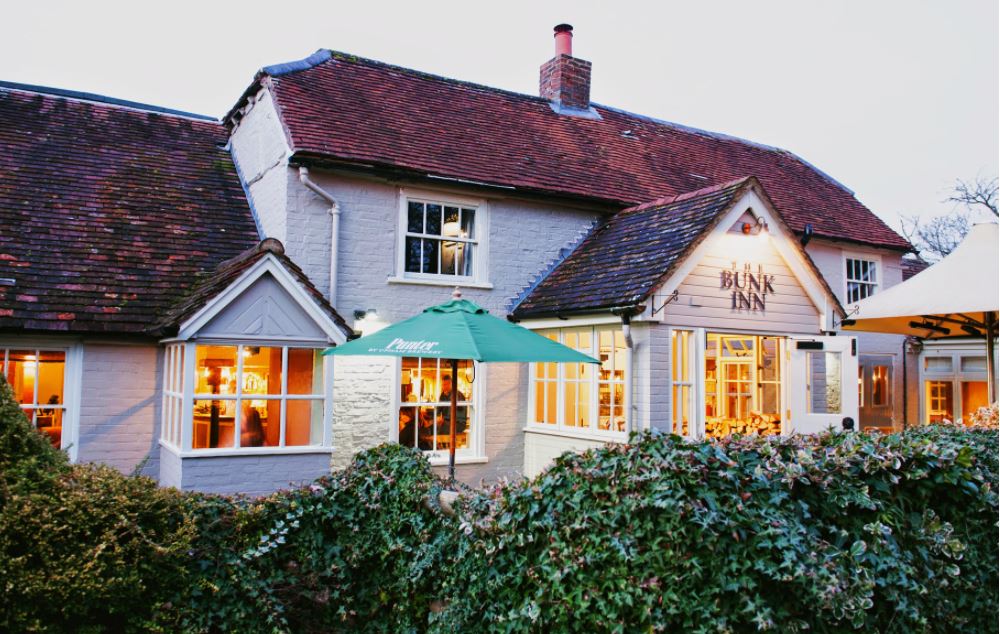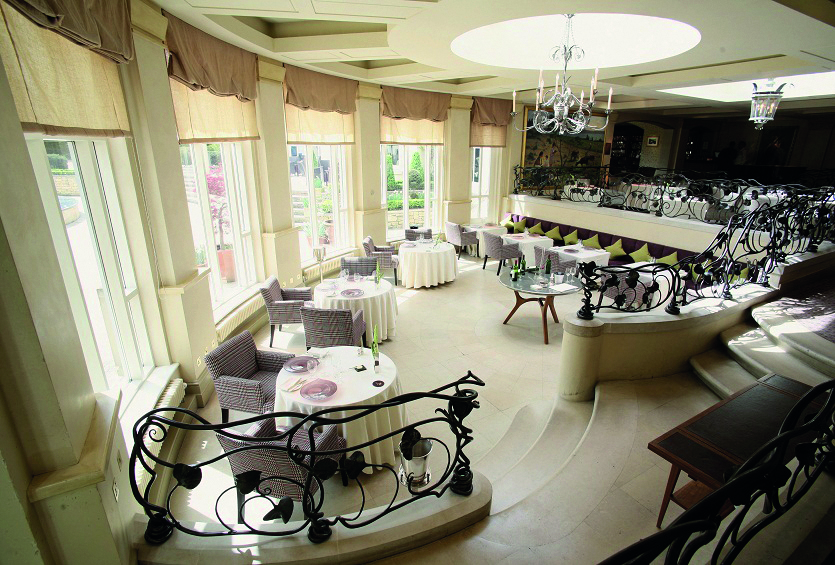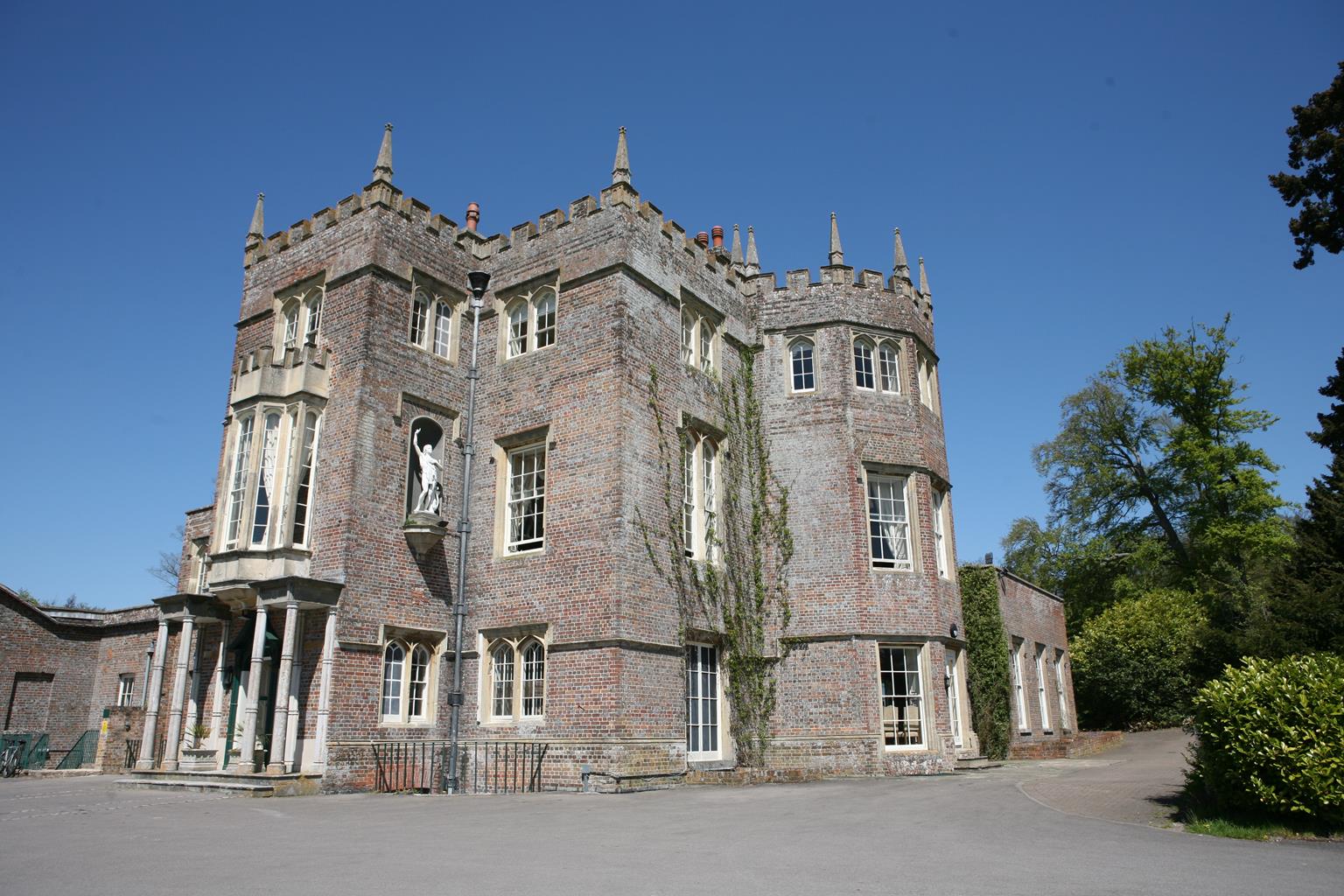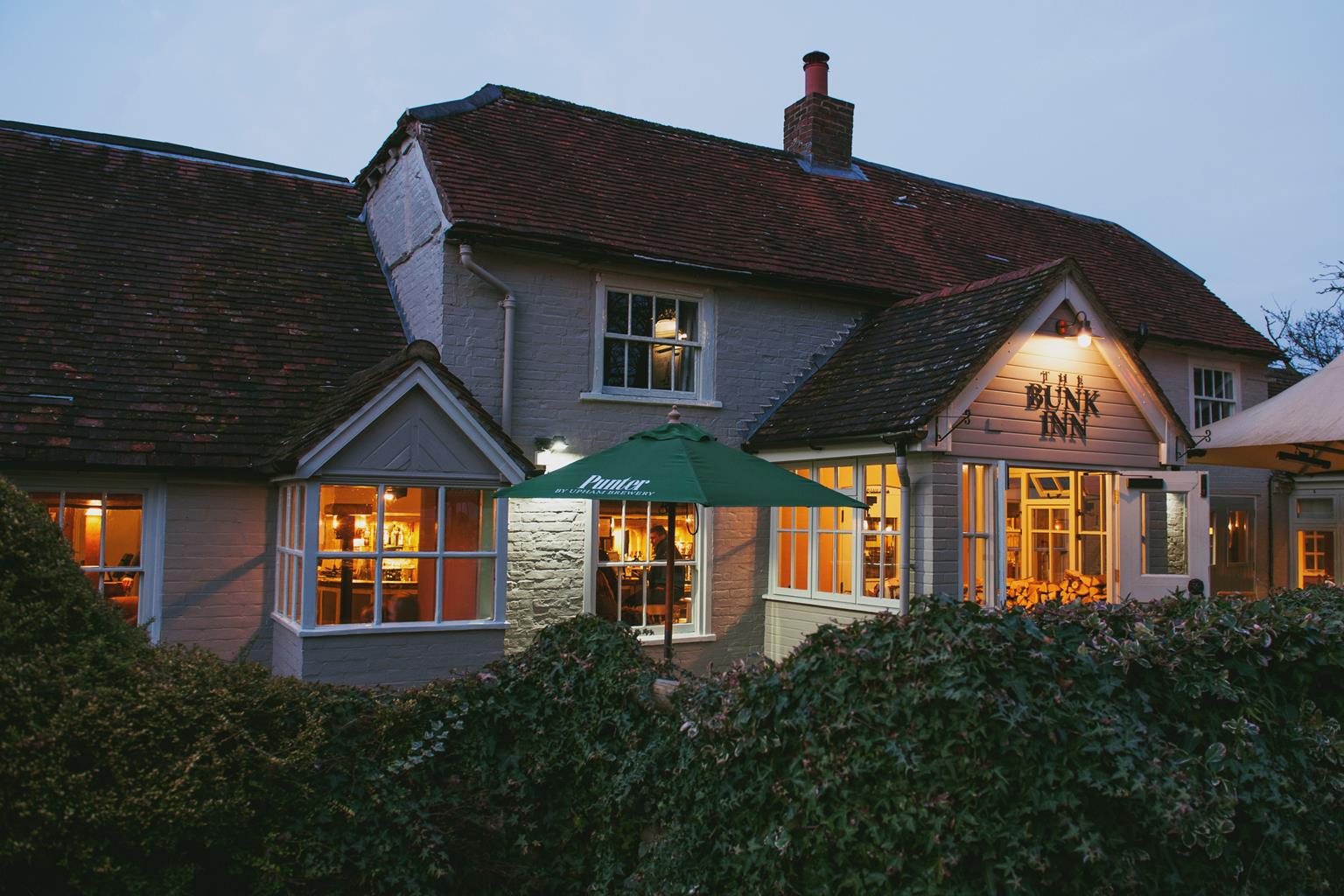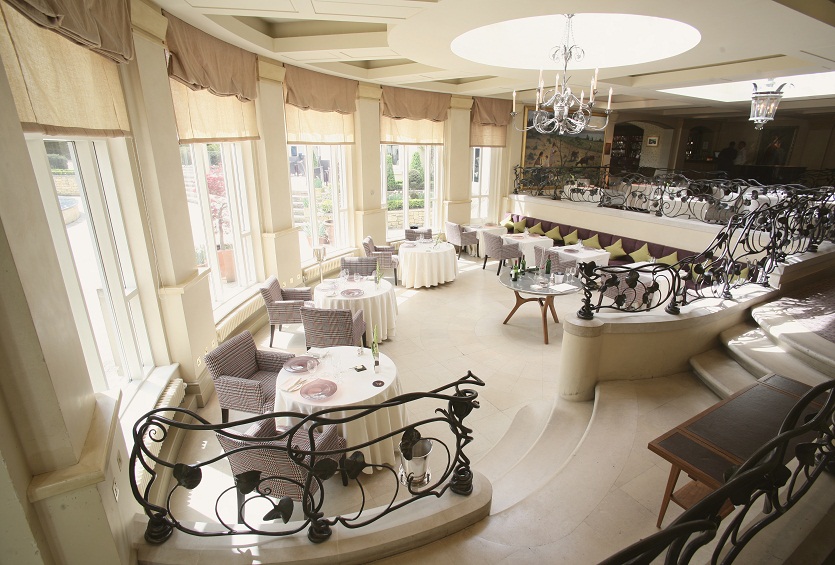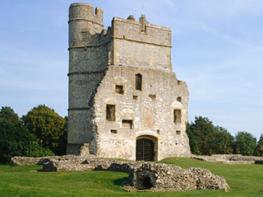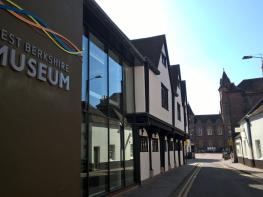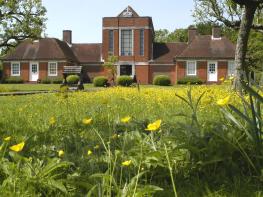In its own grounds complete with an 18-hole golf course, this stylish hotel boasts excellent…
Snelsmore Common to Donnington Castle

3.5 miles (5.7kms)
About the walk
On a hillside to the north of Newbury lie the ruins of Donnington Castle, once a major stronghold commanding the key routes through the town (now the A4 and the A34). The castle’s great strategic importance was underlined by the prolonged fighting for it during the Civil War. Today what remains looks down, somewhat forlornly, on a town that has spread widely since those days.
A long history
The manor of Deritone (now Donnington) was held by the Crown in 1086. In 1386 Richard II granted a licence to ‘build anew’ and crenellate Donnington Castle, to Sir Richard de Abberbury, a former guardian of the King. Later the castle passed to Thomas Chaucer, probably the son of the poet. By the time of Elizabeth I it was back in royal possession – there are accounts of restoration work to the castle in preparation for her visit there in 1568. This included planking the bridge, mending chamber floors, building sheds for the kitchen, and making tables and trestles.
Civil War
At the time of the Civil War, Donnington Castle belonged to John Packer, whose refusal of a loan to the King and opposition in Parliament led to the confiscation of his property by Charles I. After the First Battle of Newbury in September 1643, Colonel John Boys was sent to take command of the castle for the King, with 200 foot soldiers, 25 horses and four cannons. He strengthened the defences by constructing a star fort earthworks around it, which can still be seen below the castle. Boys withstood two Parliamentary assaults on the castle in July and September 1644, and was knighted by the King in October.
The Second Battle of Newbury, on 27 October 1644, was somewhat inconclusive, but the Royalist Army was able to slip away leaving the crown, the Great Seal and artillery in Boys’ keeping at Donnington. Boys then withstood another siege by the Parliamentary army, until relieved by the King on 9 November. Repeated attempts were made to take the castle, but Boys did not surrender until instructed to do so by the King on 1 April, 1646.
The outline of the castle can still be traced, though only the impressive twin-towered 14th-century gatehouse has survived intact. The castle hill is open freely, and the short climb is well worth the effort to admire not only the building but also the panoramic views.
Walk directions
With the car park height restriction barrier immediately behind you, veer right and continue through the car park. Follow the paved track through two sets of gates (usually open) to a kissing gate. Beyond this the track curves gradually to the left, then runs clear and straight to a left curve. Pass a seat, then a path on the right, and continue for a few paces to a bridleway (signed 'byway').
Turn sharp right and veer half left at the next fork, ignoring the path sharp left. Keep straight on, passing to the right of both the first and second wooden seats, then take the left fork to descend the steep bank, through bracken, reaching a galvanised gate at the bottom. Go through it and follow the path, which becomes a track. Pass Chestnut Cottage, and go straight ahead when the track bends right. Follow the long path along the woodland edge. Eventually you will see a golf course on the left. Reach a wooden kissing gate on the right, and go through it.
Head down the grassy field slope towards the houses of Bagnor. Go through the gate, and at the road turn left, passing The Blackbird pub. Go past the front of its garden and continue on the gravelled track past houses. Go left past Foxgrove through a kissing gate, and take the tarmac path which goes up and over the A34 via a bridge, to a golf course. Keep left (straight on) at the fork on the far side of the footbridge, heading towards the woodland. Cross the drive, and just to the left is a sign, 'Top Barn Access'. Opposite this on the right-hand side follow the waymarked path, which threads through the trees. Emerge from the woods at a gate, go through it, and climb the short, steep slope up to Donnington Castle.
With the entrance to the gatehouse at your back, look left for a wooden gate. Go through this. It leads to a track, where you turn left. Pass between the timber barns of Castle Farm,then bear left down a tarmac bridleway. Re-cross the A34 and sweep right along the bridleway, following the drive which dwindles to a track. Keep right at the fork and cut between fences. On the left are broad fairways. Follow the track towards a house set against the trees. The path runs around to the left of it.
Pass through a gate onto Snelsmore Common and go straight ahead at the waymarked junction. Pass beneath power lines and continue between bracken and gorse bushes. Keep right (straight on) at the next fork and follow the waymark pointing towards the car park. Pass the wooden observation tower, veer right onto another path as they merge and pass a small car park. Within sight of the road, look for a stile on the left which returns to the car park entrance.
Additional information
Paths and tracks through woods
Formal country park and woodland
Under control at Snelsmore Common (lead required during nesting season, March to June) and by golf course
OS Explorer 158 Newbury & Hungerford
Car park at Snelsmore Common Country Park
Snelsmore Common Country Park
WALKING IN SAFETY
Read our tips to look after yourself and the environment when following this walk.
Find out more
Also in the area
About the area
Discover Berkshire
Berkshire essentially consists of two distinct parts. The western half is predominantly rural, with the Lambourn Downs spilling down to the River Lambourn and the Berkshire Downs to the majestic Thames. The eastern half of Berkshire may be more urban but here, too, there is the opportunity to get out and savour open spaces. Windsor Great Park and Maidenhead Thicket are prime examples. Threading their way through the county are two of the South’s prettiest rivers – the Lambourn and the Pang. Beyond the tranquil tow paths of the Kennet and Avon Canal, Greenham Common’s famous airbase has been transformed to delight walkers of all ages.
Reading and Newbury are the county’s major towns, and the River Kennet flows through them both. Reading is a vibrant, multicultural centre with great shopping and plenty of history. Oscar Wilde was incarcerated in Reading prison in the late 19th century, and wrote The Ballad of Reading Gaol about his experience. Newbury is probably best known for its race course, which opened in 1905, although the first recorded racing at Newbury was a century before that. Famous people born in the county include Catherine, Duchess of Cambridge, Kate Winlset and Ricky Gervais.
Nearby stays
Restaurants and Pubs
Nearby experiences
Recommended things to do
Why choose Rated Trips?
Your trusted guide to rated places across the UK
The best coverage
Discover more than 15,000 professionally rated places to stay, eat and visit from across the UK and Ireland.
Quality assured
Choose a place to stay safe in the knowledge that it has been expertly assessed by trained assessors.
Plan your next trip
Search by location or the type of place you're visiting to find your next ideal holiday experience.
Travel inspiration
Read our articles, city guides and recommended things to do for inspiration. We're here to help you explore the UK.


